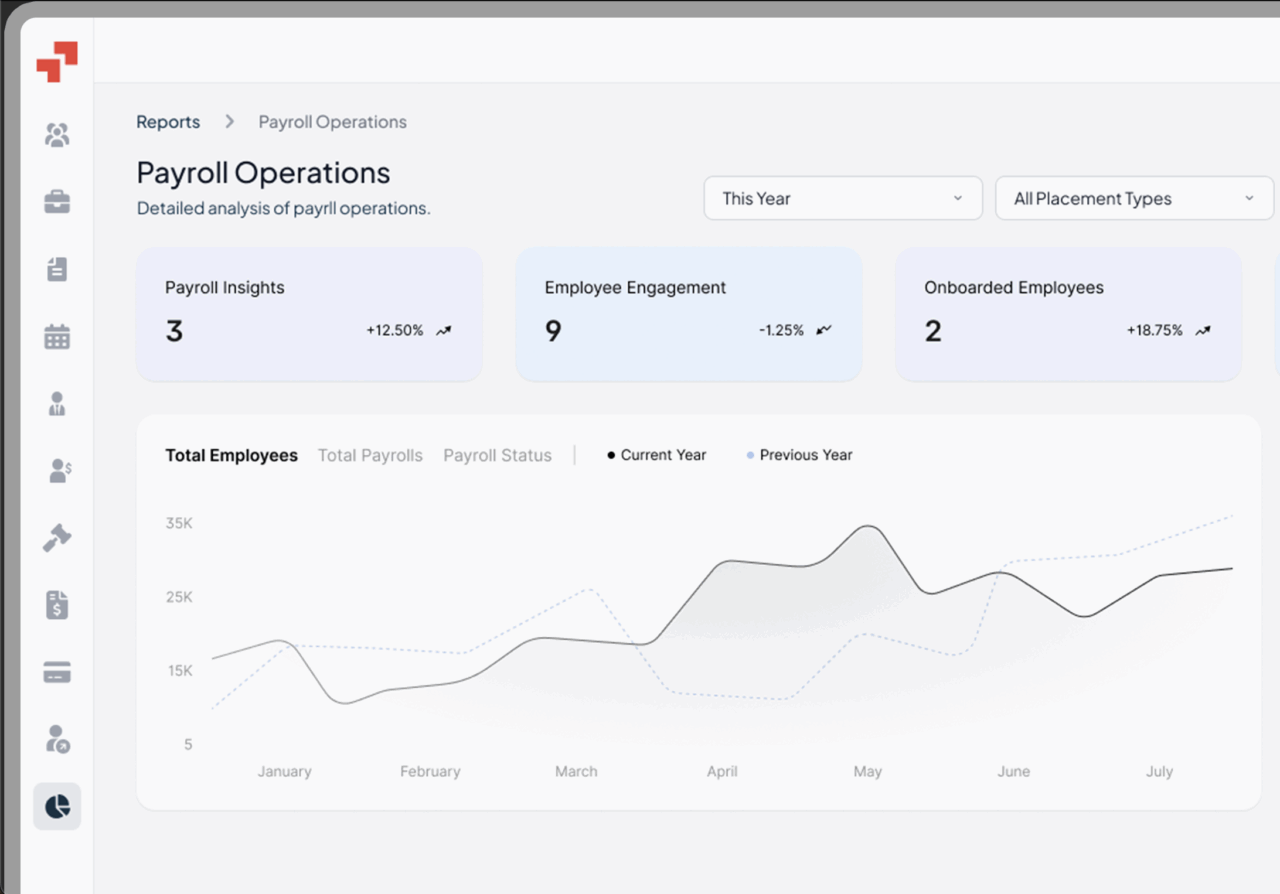Global Workforce GlossaryTax Equalization
Related Terms
Expatriate Compensation
International Double Taxation
Foreign Earned
Form 673
Total Remuneration
Expanding your workforce across borders comes with complexities, especially around taxation. Companies sending employees abroad often face challenges in ensuring fair compensation and managing employment income while navigating varying tax obligations, including tax reconciliation . Tax equalization emerges as a solution, helping employers maintain consistency, compliance, and employee satisfaction without creating financial surprises.
Table of Contents
- What is co-employment?
- What are co-employment laws?
- Why is co-employment a risk?
- What are co-employment rules
- Co-employment do’s and don’ts
- How does co-employment work?
- What is the difference between co-employment and joint employment?
- Co-employment vs PEO
- Co-employment vs employee leasing
- Is co-op considered a full-time employee?
- Is it illegal to work for two jobs in the same industry?
- Co-employment examples
- Practical Case Study Example
- PamGro and Co-employment: Your Global Partner
What Is Tax Equalization?
Tax equalization is a policy used by companies to ensure that employees working internationally pay no more or no less tax than they would in their home country.
This approach maintains tax neutrality, so expatriates are neither advantaged nor disadvantaged by different host-country income tax rates, thus alleviating potential tax burdens. U.S. expats, for instance, remain subject to U.S. federal taxes on their worldwide income regardless of their location, making tax equalization particularly relevant for them. These programs are often used by U.S. expats to address remaining tax liabilities after applying foreign tax credits and exclusions.
By applying a hypothetical tax (hypo tax), employers calculate what the employee would have paid at home and adjust compensation accordingly. This ensures fairness while the employer manages actual tax obligations abroad. It’s particularly useful for expat employees relocating through global expansion or EOR services like PamGro.
How Does Tax Equalization Work?
Tax equalization works by separating the employee’s tax liability into two parts: the hypothetical home-country tax and the actual host-country tax. The employee pays the hypothetical tax, which is deducted from their personal income, and the employer covers any additional tax obligations in the host location.
This process prevents expatriates from experiencing unexpected tax bills or windfalls. Companies often use payroll systems or EOR solutions to manage these calculations, ensuring accurate reporting and compliance. Centralizing expatriate tax management increases compliance with tax regulations and reduces the risk of errors and penalties. Many tax equalization policies also include professional tax preparation services to help expatriates understand their tax situation. PamGro’s global payroll services can automate these processes for smooth tax equalization.
How to Calculate Tax Equalization
Calculating tax equalization involves a few key steps:
- Determine the employee’s home-country hypothetical tax based on local income tax rates.
- Calculate actual host-country tax considering local regulations.
- Compute the difference: if host-country tax is higher, the employer pays the excess; if lower, the employee may receive a small adjustment.
- Gross up certain allowances to maintain tax neutrality.
- Perform an annual tax equalization settlement to reconcile the hypothetical tax withheld against the actual tax burden, ensuring the employee maintains a tax-neutral position. Totalization agreements between countries can help avoid double taxation in expatriate tax situations.
This ensures expatriates experience consistent take-home pay from a tax perspective, regardless of where they work. Companies using EOR platforms like PamGro can simplify these calculations and maintain compliance across multiple jurisdictions.
What Are the Major Objectives of Tax Equalization?
The primary objectives are:
- Ensure tax neutrality for employees on international assignments
- Protect employees from unexpected financial burdens due to higher host-country taxes
- Streamline compliance for employers
- Facilitate global mobility and attract top talent
- Apply tax equalization policies for long-term assignments lasting more than one year and for short-term assignments if tax complexities arise
- Ensure that tax equalization policies are drafted by a company’s mobility tax services provider and reflect the company’s core values
By meeting these objectives, companies can improve expatriate satisfaction and reduce administrative complexity while expanding globally.
What Is Tax Equalization Rate?
The tax equalization rate is the percentage used to calculate the hypothetical tax that an employee would pay in their home country. This rate ensures that the employee’s compensation remains neutral, reflecting what they would pay domestically.
The rate typically accounts for base salary, allowances, and any bonuses, and is recalculated if tax laws or salary components change. Employers may integrate this into EOR payroll services to automate compliance.
Why Is Tax Equalization Important?
Tax equalization is crucial because expatriates face different tax regimes, which can create financial inequality. Without a tax equalization policy, employees may owe unexpected taxes or receive higher net pay purely due to host-country tax differences, complicating tax equalization calculations. For example, a U.S. citizen working abroad might still have to pay FICA taxes while being subject to the host country’s social security system.
For businesses, it mitigates compliance risks, simplifies payroll, and supports strategic international hiring, enabling seamless global expansion with minimal financial surprises. However, tax equalization programs can result in additional payroll administration and tax compliance costs for companies. Tax equalization requires the employer to assume responsibility for all actual taxes on employment income in both home and host countries.
Benefits of Implementing Tax Equalization for Expat Employees
- Fairness: Employees pay what they would at home, maintaining equity
- Attraction & Retention: Top talent is more willing to accept international assignments
- Simplified Payroll: Reduces administrative burden for HR teams
- Compliance: Ensures adherence to local and home-country tax laws
- Predictability: Companies can forecast costs accurately
Using PamGro’s EOR services, businesses can implement these benefits without setting up legal entities abroad and avoid permanent establishment risk.
Challenges of Implementing Tax Equalization for Expat Employees
- Complex Calculations: Home and host-country taxes differ widely
- Frequent Law Changes: Tax codes can change mid-assignment
- Employee Communication: Employees need clear explanations of deductions
- Administrative Costs: Managing payroll, allowances, and gross-ups
- Employee Understanding: It’s important for companies to communicate the benefits of tax equalization policies to mobile employees to ensure understanding
Partnering with a global payroll provider like PamGro helps minimize these challenges while keeping employees satisfied.
Does Your Company Need a Tax Equalization Policy?
If your organization regularly sends employees abroad or hires global talent via EOR, a tax equalization policy ensures fairness, compliance, and financial predictability.
Companies expanding internationally benefit from structured policies to:
- Avoid employee dissatisfaction
- Prevent tax non-compliance
- Integrate smoothly with global payroll and HR systems
What Is the Difference Between Tax Equalization and Tax Protection?
- Tax Equalization: Employee pays hypothetical home-country tax; employer covers differences. Goal: tax neutrality.
- Tax Protection: Employee’s tax liability is capped; any excess is reimbursed by employer. Goal: minimize employee exposure without full neutrality.
Tax equalization is ideal for companies wanting consistent treatment, while tax protection offers flexibility for selective assignments.
What Is an Example of Tax Equalization?
A U.S.-based company assigns an employee to Germany. Home-country hypothetical tax is $20,000, while Germany taxes $25,000. The employee pays $20,000 through payroll deductions, and the company covers the $5,000 difference. Some elements of tax equalization in Germany have been legally challenged regarding the hypothetical tax deduction.
With PamGro handling payroll and tax compliance, the company ensures accurate payments, regulatory adherence, and consistent net pay for the employee eliminating any financial surprises during the assignment.
Practical Example / Case Study
Scenario: A SaaS company based in the U.S. hired a project manager for a two-year assignment in France. Without tax equalization, the employee would face higher French income tax than their U.S. obligations, causing dissatisfaction and potential early repatriation.
Implementation: The company applied a tax equalization policy. They calculated the hypothetical U.S. tax (home-country), deducted it from the employee’s salary including company sourced income , and the company covered any excess French tax.
Outcome:
- Employee retained financial neutrality, with predictable take-home pay
- Employer avoided tax compliance issues and administrative burden
- Enhanced employee satisfaction supported long-term global mobility and operational efficiency
This case demonstrates how a well-implemented company’s tax equalization policy, supported by global payroll solutions, benefits both employer and employee.
Final Thoughts on Tax Equalization
Implementing tax equalization can be complex, but PamGro simplifies global employment. Our EOR and international payroll services ensure your global employees remain financially neutral while your company stays fully compliant with local and home-country tax laws.
Whether hiring abroad or expanding globally, PamGro provides a turnkey solution for payroll management, tax equalization, and compliance—letting you focus on growth without worrying about cross-border tax complexities.
Explore PamGro’s Services: Global Payroll & EOR Solutions
Hire the Best Talent, Anywhere






